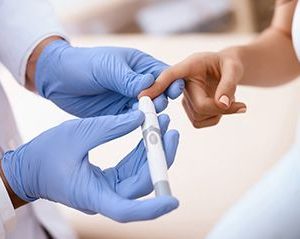- Navigating Your Midlife Crisis: Embracing New Possibilities
- City Raccoons Showing Signs of Domestication
- Mapping the Exposome: Science Broadens Focus to Environmental Disease Triggers
- One Week Less on Social Media Linked to Better Mental Health
- Your Brain Changes in Stages as You Age, Study Finds
- Some Suicide Victims Show No Typical Warning Signs, Study Finds
- ByHeart Formula Faces Lawsuits After Babies Sickened With Botulism
- Switch to Vegan Diet Could Cut Your Greenhouse Gas Emissions in Half
- Regular Bedtime Does Wonders for Blood Pressure
- Dining Alone Could Mean Worse Nutrition for Seniors
Does ‘Prediabetes’ Lead to Full-Blown Diabetes? Age May Be Key

Few older adults with prediabetes will actually go on to develop type 2 diabetes, new research concludes.
The surprising finding suggests that while prediabetes is a useful predictor of diabetes risk in young and middle-aged adults, that’s not the case in older folks.
“Our results suggest that for older adults with blood sugar levels in the prediabetes range, few will actually develop diabetes,” said senior author Elizabeth Selvin, a professor of epidemiology at Johns Hopkins Bloomberg School of Public Health in Baltimore. “The category of prediabetes doesn’t seem to be helping us identify high-risk people.”
People with prediabetes have blood sugar levels that are higher than normal but not yet in the diabetic range.
The study included nearly 3,500 Americans between 71 and 90 years of age with no history of diabetes. They were initially assessed between 2011 and 2013.
At that time, 59% were deemed prediabetic based on results of the impaired fasting glucose test (IFG). So were 44% who were checked with the glycated hemoglobin (HbA1c) test.
During follow-ups in 2016-2017, 8% of IFG-defined prediabetics and 9% of HbA1c-defined prediabetics had developed diabetes.
Blood sugar levels in 44% of the IFG group and 13% of the HbA1c group had returned to the normal range by 2016-2017, researchers found.
By that time, 16% of the IFG group and 19% of those in the HbA1c group had died of other causes, according to findings.
Type 2 diabetes leads to chronically high blood sugar, which stresses organs such as the kidneys, weakens the immune system and promotes heart disease and stroke, among other conditions.
Selvin said doctors should instead focus on healthy lifestyle changes and important disease risk factors such as smoking, high blood pressure and high cholesterol.
Prediabetes is a widely used indicator of increased diabetes risk in younger and middle-aged people.
“It’s very common for older adults to have at least mildly elevated blood glucose levels, but how likely they are to progress to diabetes has been an unresolved question,” Selvin said in a Hopkins news release.
The study was published Feb. 8 in JAMA Internal Medicine.
More information
The American Academy of Family Physicians has more on prediabetes.
SOURCE: Johns Hopkins Bloomberg School of Public Health, news release, Feb. 8, 2021
Source: HealthDay
Copyright © 2025 HealthDay. All rights reserved.










